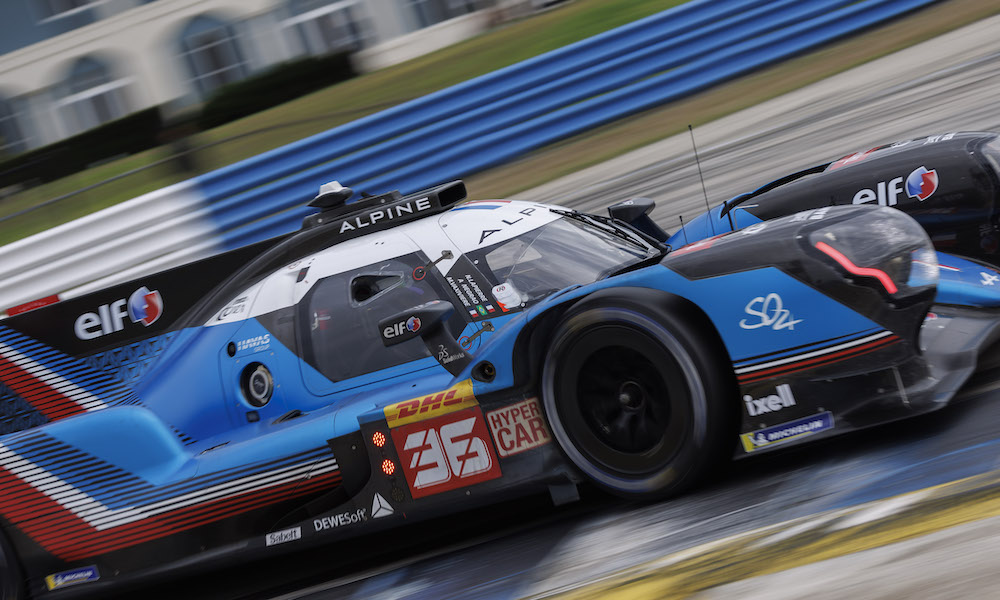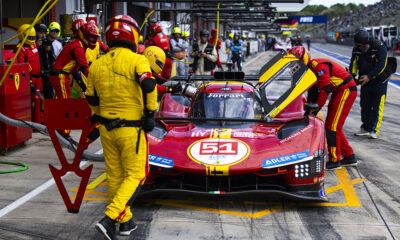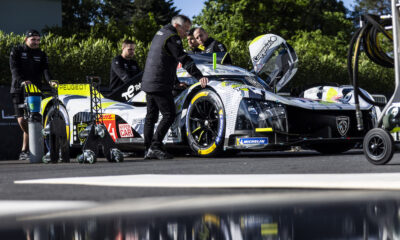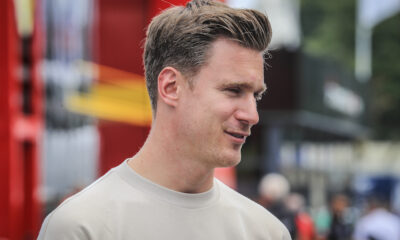Alpine “anticipated” a power reduction in the Hypercar Balance of Performance for Spa and subsequently “worked a lot” on power and fuel management to optimize its grandfathered LMP1 car for the six-hour FIA World Endurance Championship race.
Team principal Philippe Sinault, whose Signatech organization runs Alpine’s top-category WEC effort, said before the second round of the season that the French squad saw a BoP change coming after its dominant win at the 1000 Miles of Sebring.
He acknowledged that Alpine’s focus has shifted from its Sebring philosophy of pushing the outright pace of the car to managing power and fuel around the 4.35-mile Spa track, in an attempt to negate the effects of an extra pit stop due to its smaller fuel tank.
The BoP adjustment removes around 27 horsepower from the Alpine A480 Gibson’s top output, at a track that features two high-speed sectors with long straights.
“Regarding the aerodynamic and mechanical settings, we are at the maximum we can provide with this car,” Sinault said.
“Our best way of improvement is power and energy management. We have worked a lot on this when we received the BoP, and we anticipated the BoP a bit.
“Sebring was a totally different philosophy. We worked like in Formula 3 to make the car more efficient, to do really well on the bumps. It was the reason why our car was so efficient.”
Sinault described Sebring as an “exotic” race that Alpine’s lineup of Nicolas Lapierre, Andre Negrao and Matthieu Vaxiviere needed to capitalize on, with the heavier Toyota GR010 Hybrids struggling on the bumpy Florida circuit.
“It’s the reason why I say Sebring is in the past,” he said. “[Spa is] like a new competition with a new category, totally different.
“We have some knowledge about this track because we started here one year ago.
“We have improved the level of the team and the car. So we are more confident compared with last year, but we will see.
“I can’t wait for this first Free Practice session to have a better view.”
Alpine is not unhappy with the power reduction for Spa, with Sinault describing it as “part of the game” in the WEC’s Hypercar category.
Asked for his opinion on the BoP change, he said: “We planned something like this arriving at Spa.
“We have a different point of view on the details, but we have to manage it. It’s part of the running of the BoP.”
Toyota Gazoo Racing’s WEC technical director believes the BoP change will lead to a more even contest at Spa, where the Japanese manufacturer is hoping to ignite its world championship defense.
The No. 8 Toyota crew of Sebastien Buemi, Brendon Hartley and Ryo Hirakawa finished second at Sebring, while the No. 7 retired after a big crash for Jose Maria Lopez.
“There has definitely been a correction that should make sure that the race will be closer,” suggested Pascal Vasselon.
He continued by highlighting the “different performance profiles” that exist between LMH cars and the grandfathered Alpine LMP1.
The ORECA-built Alpine is less powerful than the LMH vehicles from Glickenhaus and Toyota but can generate more downforce. It is also much lighter, with its current weight of 952 kg sitting far below the 1030 kg minimum for an LMH car in competition.
These traits appear to have helped the Alpine perform best at Sebring, where the LMH prototypes had never previously raced.
“The performance profiles are so different that from track to track, even without changing the BoP, you would get different results,” Vasselon said. “This is why it is so difficult.
“When you enter cars which have the same performance profile…the different track layouts will impact all cars in the same way.
“Between Alpine, Glickenhaus and us it’s not the case. You can be perfectly balanced on one track, go to another one and get a different result because the performance profile is so different.
“This is what we suspected and, I think, is the main reason why it was so far off [at Sebring].”
Alpine used this discrepancy to full effect at Sebring where it “pushed the whole race” because it saw that it could overcome the need for an additional stop using pure speed.
The situation now resembles last season when fuel management was the preferred approach, but Alpine is assured that it can make a contest to maintain its title bid.
“Each day we work to reduce this gap and be on the [LMH] level,” said Sinault. “We have found some ways of improvement to be closer.”
























